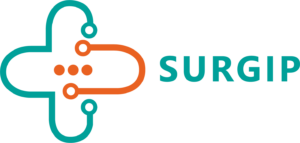Introduction:
Did you know that the key to revolutionizing operating room scheduling and optimizing surgical processes lies in a cutting-edge solution known as a streamlined surgical planning application? Imagine a world where operating room schedules are seamlessly coordinated, resources are efficiently allocated, and patient care is enhanced through advanced technologies and data-driven insights. In this blog post, we delve into the transformative power of a streamlined surgical planning application, exploring its benefits, features, and the innovative ways in which it is reshaping the landscape of healthcare operations. Let's embark on a journey of discovery into the future of surgical planning and scheduling excellence.
Benefits of a Streamlined Surgical Planning Application
Improved Efficiency in Operating Room Scheduling
Incorporating a streamlined surgical planning application into your healthcare facility can significantly enhance the efficiency of operating room scheduling. By utilizing advanced software solutions specifically tailored for surgical planning, medical institutions can optimize their scheduling processes, leading to reduced wait times, improved patient care, and enhanced overall operational efficiency.
Key advantages include:
-
Automated scheduling algorithms that consider various factors such as procedure duration, surgeon availability, and equipment requirements.
-
Seamless coordination among all members of the surgical team, ensuring everyone is on the same page regarding scheduling details and patient information.
-
Real-time updates and notifications that enable quick adjustments to the schedule in case of emergencies or last-minute changes.
Enhanced Communication Among Surgical Team
Effective communication is crucial in the healthcare setting, especially within surgical teams where coordination and collaboration are paramount. A streamlined surgical planning application facilitates seamless communication among team members, allowing for better coordination before, during, and after surgical procedures.
With the application, teams can:
-
Easily view and access updated surgical schedules, minimizing the risk of miscommunication or misunderstandings.
-
Share important notes, patient details, and preoperative instructions in a centralized platform accessible to all team members.
-
Collaborate in real-time, fostering a more cohesive and coordinated approach to patient care.
Reduction in Scheduling Errors and Conflicts
One of the most significant benefits of implementing a streamlined surgical planning application is the reduction in scheduling errors and conflicts. Manual scheduling processes are prone to human error, leading to missed appointments, double bookings, and confusion among staff members. By automating the scheduling process and incorporating advanced algorithms, healthcare facilities can minimize errors and ensure a smoother overall operation.
The application helps in:
-
Preventing double bookings by providing real-time availability updates and conflict alerts.
-
Streamlining the rescheduling process in case of cancellations or delays, minimizing disruptions to the overall schedule.
-
Improving patient satisfaction by reducing wait times, enhancing the patient experience, and ensuring surgeries are conducted promptly and efficiently.
In conclusion, a streamlined surgical planning application offers a multitude of benefits, including improved efficiency, enhanced communication, and a reduction in scheduling errors. By leveraging technology to streamline the scheduling process, healthcare facilities can optimize their operations and provide better care for their patients.
Benefits of a Streamlined Surgical Planning Application
Real-Time Scheduling Updates
In the fast-paced environment of surgical facilities, real-time updates are crucial for efficient scheduling and effective patient care. A streamlined surgical planning application offers the advantage of immediate scheduling updates, ensuring that all stakeholders are informed of any changes or additions to the surgical schedule in real time.
Key features include:
-
Instant notifications of schedule modifications to all relevant staff members, reducing the risk of miscommunication or confusion.
-
Integration with electronic health records (EHR) systems for seamless access to patient information and history during the scheduling process.
-
Customizable alerts and notifications that can be tailored to specific roles or departments, ensuring that the right information reaches the right people promptly.
Optimal Utilization of Operating Room Time Slots
Utilizing operating room time slots effectively is essential for maximizing the facility's capacity and improving overall operational efficiency. A streamlined surgical planning application helps in optimizing the utilization of operating room time slots by providing insights into available time slots, equipment availability, and surgeon preferences.
Ways in which the application aids in optimal time slot utilization:
-
Automated algorithms that consider factors such as procedure duration, equipment requirements, and surgeon availability to allocate time slots effectively.
-
Visibility of unused time slots and quick booking capabilities to fill gaps and avoid underutilization of resources.
-
Smart scheduling functionalities that allow for the prioritization of urgent cases or complex procedures, ensuring efficient use of operating room time.
Improved Efficiency in Resource Allocation
Effective resource allocation is key to ensuring that surgical procedures run smoothly and without delays. A streamlined surgical planning application enhances efficiency in resource allocation by providing insights into resource availability, requirements, and utilization patterns.
The application enables:
-
Dynamic resource allocation based on real-time data and demand forecasting.
-
Prioritization of critical resources to avoid bottlenecks and delays in the surgical workflow.
-
Data-driven insights into resource utilization trends for continuous improvement and optimization of resource allocation strategies.
By harnessing the power of a streamlined surgical planning application, healthcare facilities can enhance their scheduling processes, optimize resource allocation, and ultimately improve the overall quality of patient care and operational efficiency.
Importance of Data Security in Streamlined Surgical Planning Applications
In the healthcare industry, data security is of utmost importance, especially when it comes to sensitive patient information and surgical schedules. Implementing a streamlined surgical planning application requires a robust data security framework to protect patient privacy, comply with regulations, and safeguard critical operational data.
HIPAA Compliance Standards
Health Insurance Portability and Accountability Act (HIPAA) compliance is a fundamental requirement for any healthcare software applications handling patient data. A streamlined surgical planning application must adhere to HIPAA standards to ensure the confidentiality, integrity, and availability of patient information throughout the scheduling process.
Secure Cloud Storage Solutions
Utilizing secure cloud storage solutions is essential for storing and managing the vast amounts of data generated by surgical planning applications. Cloud storage offers scalability, accessibility, and redundancy, but it also necessitates robust security measures to prevent unauthorized access and data breaches.
Protected Health Information (PHI)
Protected Health Information (PHI) is highly sensitive data that must be safeguarded to prevent privacy breaches and unauthorized disclosures. A streamlined surgical planning application must employ encryption, access controls, and audit trails to protect PHI and maintain the trust of patients and regulatory bodies.
Role-Based Access Control Measures
Implementing role-based access control measures ensures that only authorized personnel can view, modify, or interact with patient data and scheduling information within the application. By assigning roles and permissions based on job responsibilities, healthcare facilities can prevent data misuse, leaks, or tampering.
External Link:To learn more about data security in healthcare software applications, visit IBM's healthcare security solutions page. IBM is a leading provider of cybersecurity solutions for the healthcare industry, offering comprehensive tools and resources to protect sensitive data and ensure regulatory compliance.
Integrating AI and Machine Learning in Streamlined Surgical Planning Applications
Innovative technologies like Artificial Intelligence (AI) and Machine Learning (ML) are revolutionizing the healthcare industry, particularly in the realm of surgical planning and scheduling. The integration of AI and ML algorithms into streamlined surgical planning applications offers enhanced predictive capabilities, dynamic resource allocation, and continuous optimization for better operational efficiency.
Predictive Scheduling Analysis
AI-powered predictive scheduling analysis enables healthcare facilities to anticipate patient demand, surgical complexities, and resource requirements with greater accuracy. By analyzing historical data, predictive algorithms can forecast future scheduling needs, optimize resource utilization, and minimize scheduling conflicts.
Dynamic Resource Allocation
Machine Learning algorithms empower streamlined surgical planning applications to dynamically allocate resources based on real-time data streams, event triggers, and demand fluctuations. This adaptive resource allocation ensures that critical resources are allocated efficiently, reducing wastage and enhancing overall operational productivity.
Continuous Improvement through Data Analytics
The use of AI and ML in surgical planning applications facilitates continuous improvement through data analytics and performance metrics. By analyzing operational data, user feedback, and outcome metrics, healthcare facilities can identify bottlenecks, inefficiencies, and areas for optimization to enhance the overall surgical planning process.
External Link:For further insights on AI and Machine Learning in healthcare technology, visit Microsoft Healthcare Solutions. Microsoft is a global leader in providing AI-driven solutions for the healthcare sector, offering advanced tools and technologies to drive innovation and improve patient care outcomes.
Conclusion: Advancing OR Scheduling with a Streamlined Surgical Planning Application
In conclusion, the adoption of a streamlined surgical planning application offers a transformative solution for optimizing operating room scheduling and enhancing overall healthcare operational efficiency. By leveraging advanced technologies, robust data security protocols, and innovative AI-driven functionalities, healthcare facilities can revolutionize their scheduling processes, improve resource utilization, and provide superior patient care experiences.
Key Takeaways:
-
A streamlined surgical planning application streamlines scheduling processes, reduces errors, and enhances communication within surgical teams.
-
Real-time scheduling updates and optimal resource allocation are essential for maximizing operating room efficiency.
-
Data security measures, including HIPAA compliance and secure cloud storage, are critical for protecting sensitive patient data.
-
Integration of AI and Machine Learning enhances predictive analysis, resource optimization, and ongoing performance improvement in surgical planning applications.
By embracing these advancements and incorporating a streamlined surgical planning application into their operations, healthcare facilities can achieve greater efficiency, accuracy, and patient satisfaction. The future of operating room scheduling looks promising with the implementation of cutting-edge technologies and solutions tailored to meet the evolving needs of the healthcare industry.
External Link:To explore further innovations in healthcare technology and solutions, visit Google Cloud Healthcare for insights on cloud-based tools and applications designed to transform healthcare operations and delivery. Google Cloud is a leading provider of secure and scalable technology solutions for the healthcare sector.
FAQ
How can a streamlined surgical planning application improve operating room efficiency?
A streamlined surgical planning application enhances operating room efficiency by automating scheduling processes, providing real-time updates, and optimizing resource utilization. This leads to reduced wait times, minimized scheduling errors, and improved overall operational productivity.
What features should I look for in a high-quality surgical planning application?
A high-quality surgical planning application should include features such as real-time scheduling updates, integration with electronic health records, customizable alerts and notifications, predictive scheduling analysis, and dynamic resource allocation capabilities.
Is data security a priority when implementing a surgical planning application?
Yes, data security is a critical consideration when implementing a surgical planning application. Ensuring compliance with HIPAA standards, utilizing secure cloud storage solutions, and implementing role-based access controls are essential for protecting sensitive patient information.
How can AI and Machine Learning benefit surgical planning applications?
AI and Machine Learning can benefit surgical planning applications by enabling predictive scheduling analysis, dynamic resource allocation, continuous improvement through data analytics, and enhanced decision-making capabilities based on historical data and real-time insights.
What are the potential challenges in adopting a streamlined surgical planning application?
Some challenges in adopting a streamlined surgical planning application may include staff training and adaptation to new technology, integration with existing systems, ensuring data accuracy and consistency, and addressing any workflow disruptions during the transition period.

